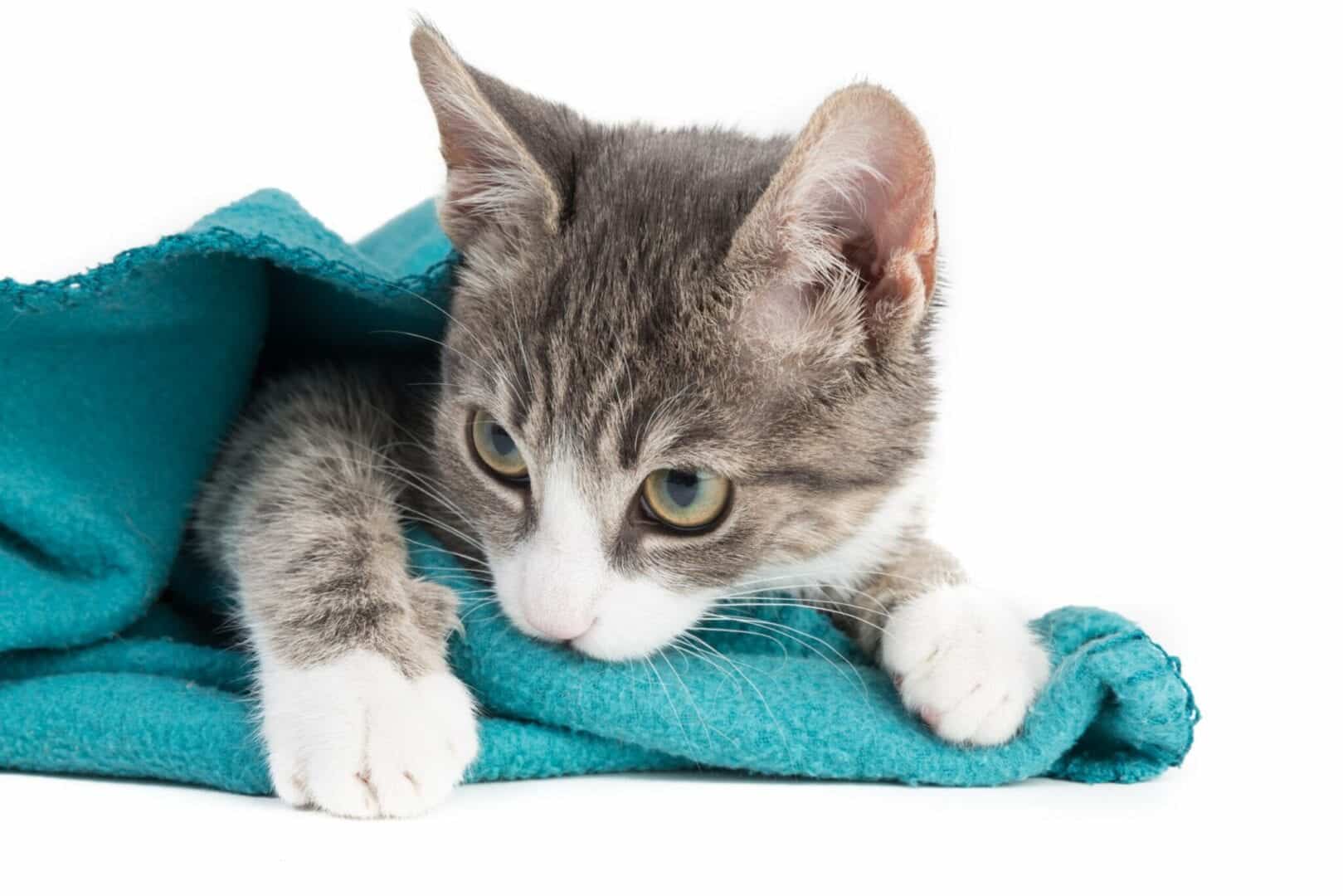Pica in cats is an eating disorder characterized by the ingestion of non-food items. Cats with this condition may gnaw on houseplants, obsessively lick plastic grocery bags, or compulsively eat rubber bands. As you can imagine, this behavior is quite dangerous as it can lead to choking, poisoning, or intestinal obstructions.
So why are some cats compelled to eat things they shouldn’t and what can you do to control it?
Wool-Sucking Behavior
Kittens taken from their mothers too soon are prone to a behavior known as “wool sucking.” These cats tend to nurse on soft, nubby material such as blankets, clothing, and stuffed animals. They may also attempt to nurse on their owners’ hair, clothes, or earlobes. Some even go after other pets in the home.
Wool-sucking is similar to thumb-sucking in children. It is a way to self-comfort and is typically harmless. However, these cats are more likely to develop pica and may progress to eating fuzz from the objects they nurse on. This may also predispose them to move on to more dangerous items like plastic bags or electrical wires.
Why Do Some Cats Eat Non-Food Items?
Most wool-sucking kittens outgrow the behavior, and those that keep it up are only in danger if they progress to swallowing non-food items. Unfortunately, there is no way to tell which cats will develop pica, but there are several theories as to the underlying cause(s):
Genetic Predisposition
Some Oriental breeds like Siamese and Birmans are more likely to be wool-suckers. Since this behavior is often a precursor to pica, these cats may have a genetic predisposition to the disorder.
Vitamin Deficiencies
Some cats eat specific materials when they are ill or missing certain vitamins and minerals in their diet. For example, those with anemia may eat their cat litter while malnourished kitties may try to get the nutrition they need by eating plant material.
Medical Problems
According to Fetch by WebMD, pica in cats can be related to the following serious medical conditions:
- Feline Leukemia
- Feline Immunodeficiency Virus (FIV)
- Diabetes
- Brain Tumors
Lifestyle
Some cats may get into things they shouldn’t when they are bored or trying to get your attention. In this case, solving the problem could be as simple as providing more mental and physical stimulation.
What Can You Do To Discourage Pica?
Talk to your vet.
If your cat is eating non-food items it is important to rule out a medical issue. If it turns out to be strictly behavioral, he or she can recommend techniques like the ones below or refer you to an animal behaviorist.
Remove or replace targeted items.
If your cat likes to gnaw on rubber bands, clothes, or plants, make sure you keep those items well out of reach. When you catch your cat going after your sweater or favorite throw blanket, divert her attention toward something safer like a treat-dispensing cat toy.
For cats that eat houseplants, try growing cat-safe grasses or catnip they can chew on instead. Above all else, learn which plants are potentially dangerous and remove them from your home.
Give your cat more attention.
Your cat’s pica may be caused by loneliness or boredom. Try setting aside time each day for mental and physical stimulation. This can come in many forms: new toys, a window perch for birdwatching, you could even try harness-training so you can take daily walks together.
Make desirable items less appealing.
There are several smells cats despise. Try spraying a citrus air-freshener or lavender essential oil on your nubby throw blankets and around the wires of your entertainment center.
Be patient.
Complex issues like pica in cats do not resolve overnight. It may be something you have to keep an eye on for the rest of your kitty’s life. The important thing is to keep her safe and healthy.







